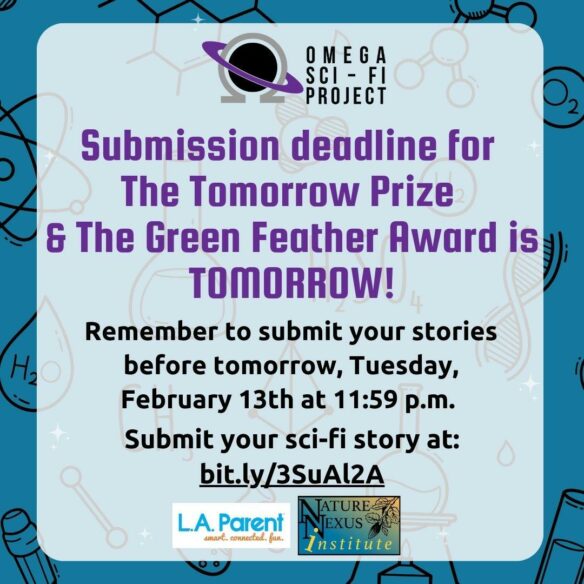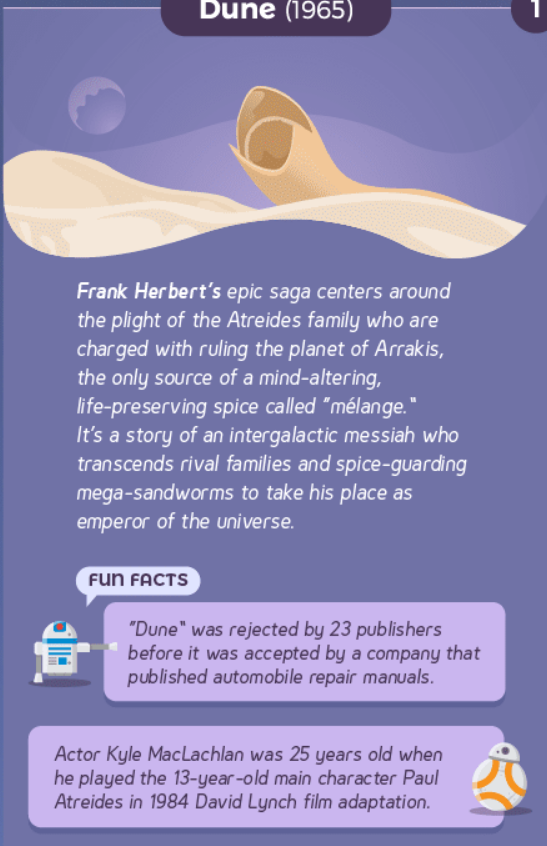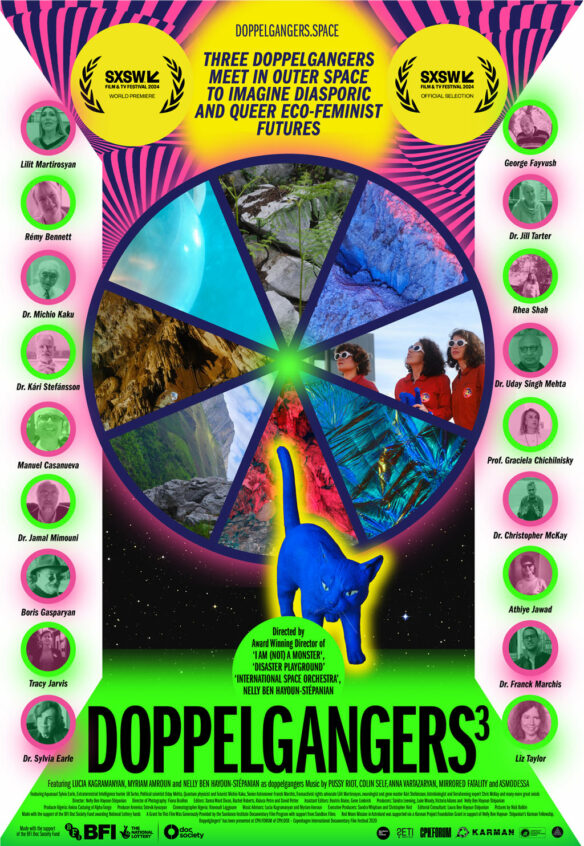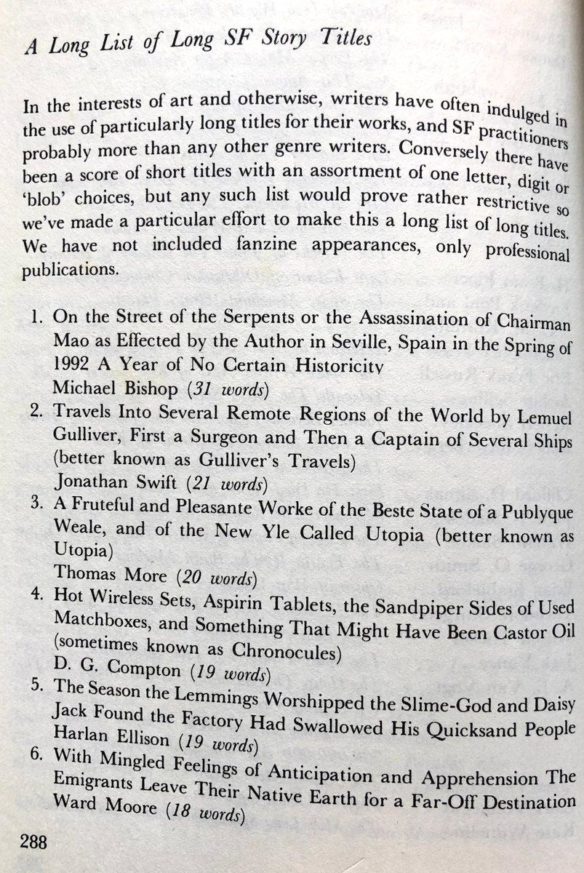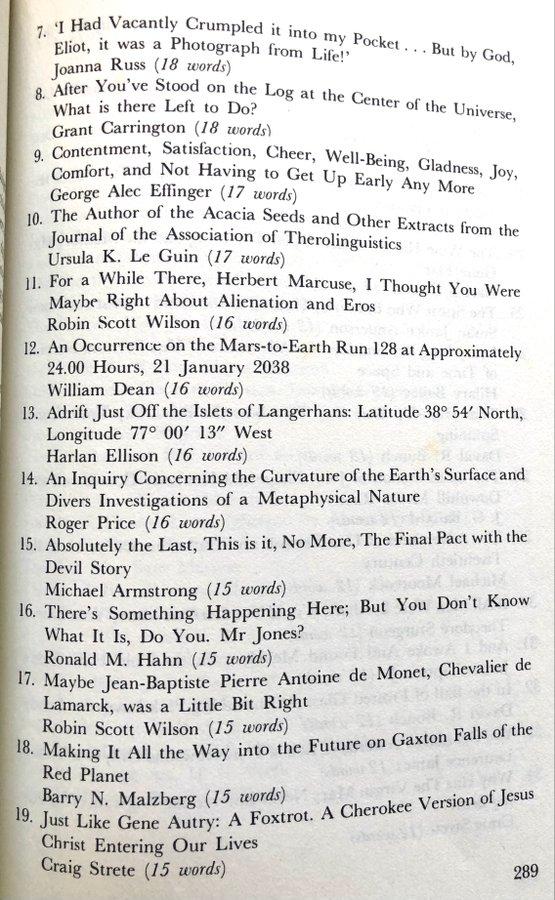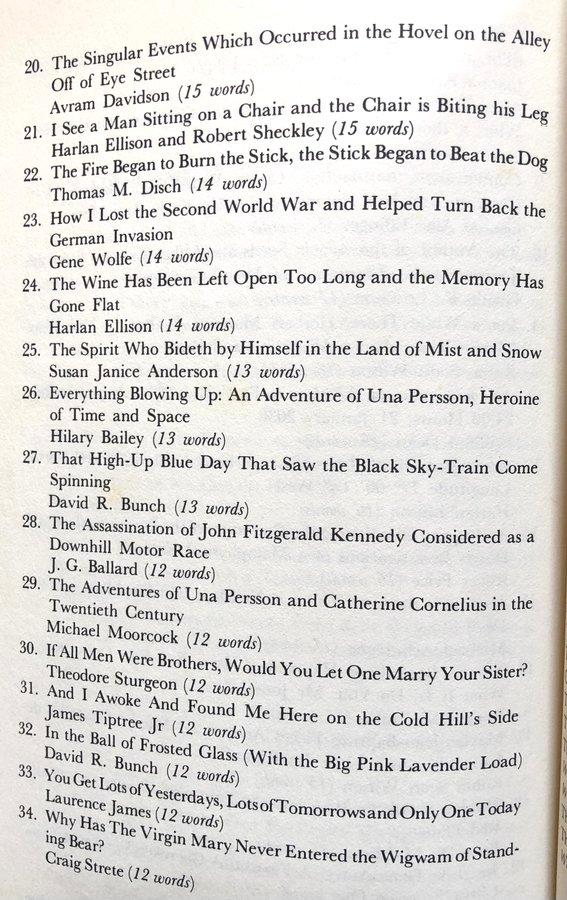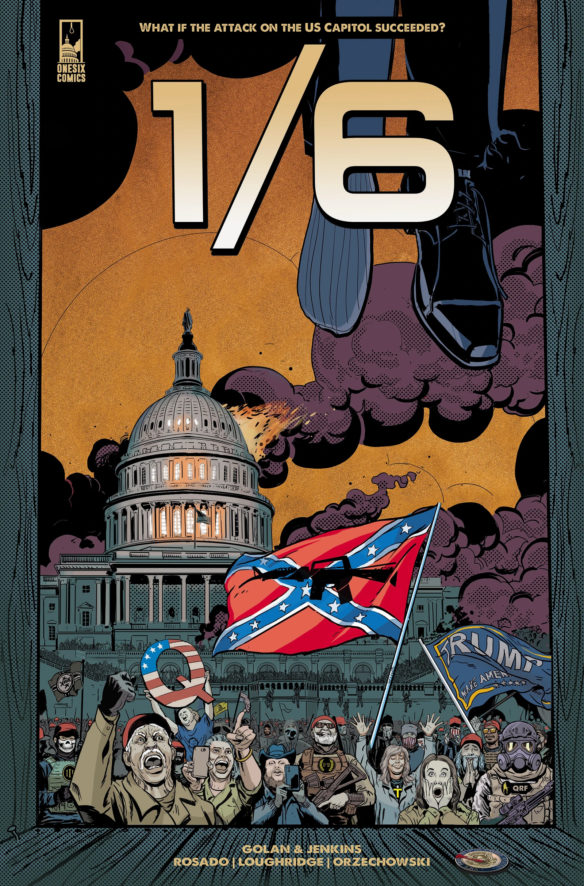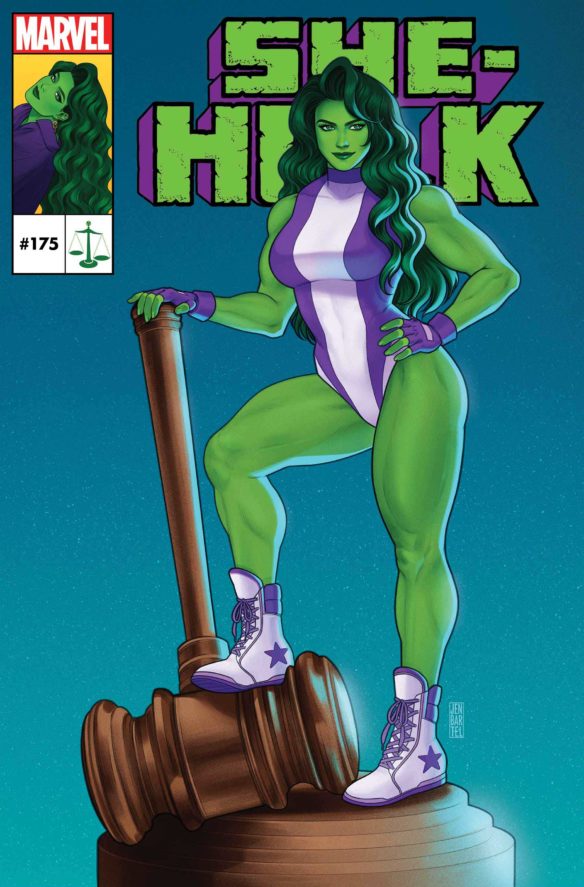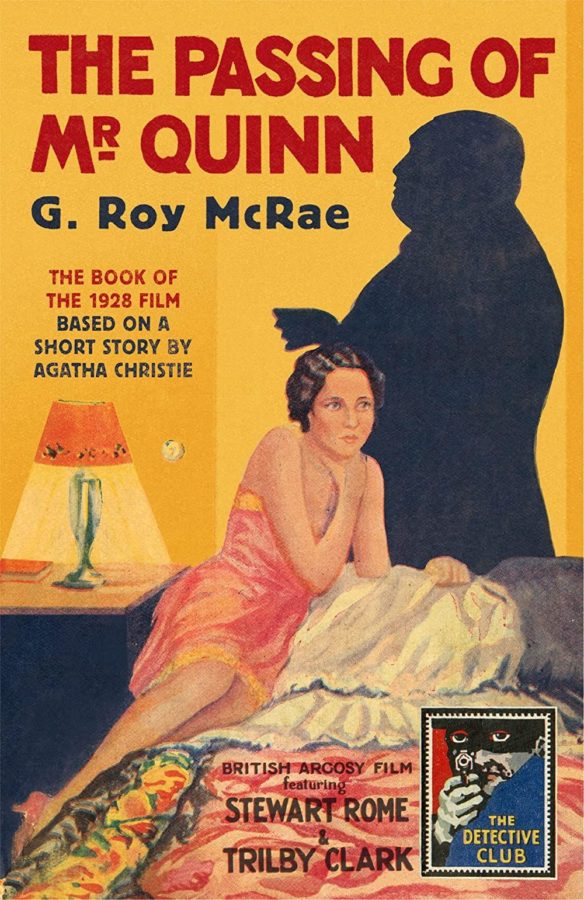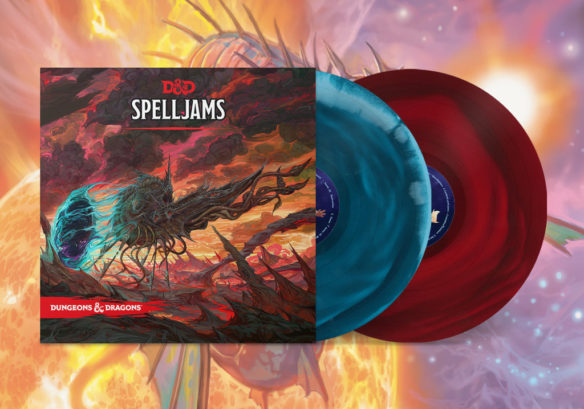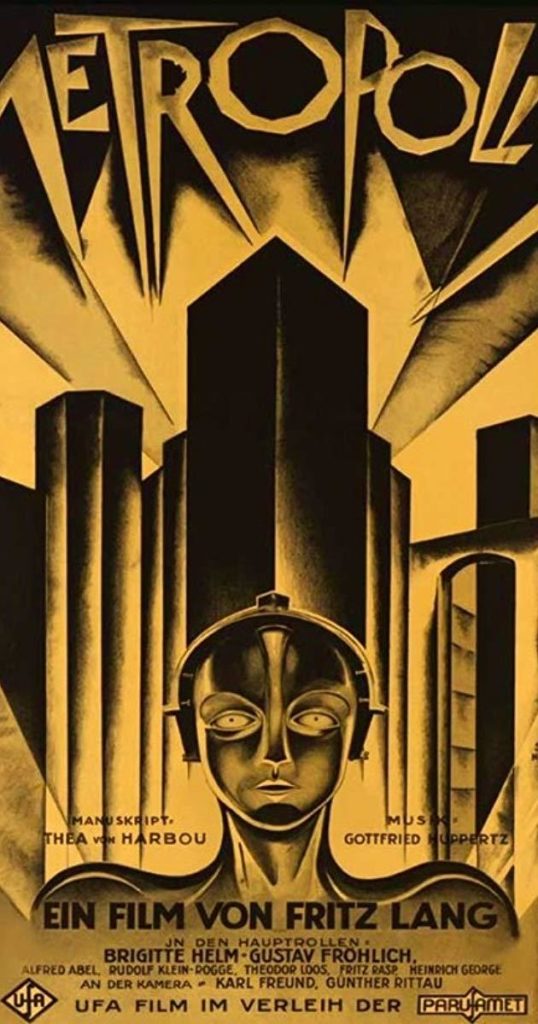(1) HIGHEST QUALITY DUMPS. Dorothy Grant points writers at “Excellent info on infodumping well” at Mad Genius Club.
I used to think I hated infodumps. I’ve come to realize, with careful line-by-line analysis of works I love and works I find mediocre, that I hate poorly-done infodumps.
What is the difference?
Relevancy, and timeliness.
Here’s an excerpt from Grant’s advice about relevancy:
Relevancy:
“Who is my audience and what specific question does it need answered?”If my audience are current and prior military looking for a thriller, then that affects how I present the answer, as opposed to if my audience are civilian women over 40 looking for a light romance read that will not tax them by forcing them to think.
…But even in thrillers, where the audience enjoys the deep dive into the specs on the submarine, or the loadout someone’s carrying, they only enjoy it if it’s useful to the story.
(2) ARKS LOST AND FOUND. Julien*s Auctions has an array of highly recognizable props in its “Hollywood Legends: Danger, Disaster & Disco” auction happening June 12-14.
From beloved blockbusters to side-splitting comedies, cult classics, and even thought-provoking art films, this auction is a treasure trove for movie enthusiasts. Brace yourself as The Big Lebowski, Star Wars, Raiders of the Lost Ark, and E.T. the Extra-Terrestrial take center stage, alongside the electrifying disco inferno of Saturday Night Fever. Marvel and DC fans, prepare to unleash your inner superhero as this auction proudly showcases astounding treasures from the beloved comic book universes.
- Raiders of the Lost Ark — Production-Used Ark of the Covenant Prop; Estimate: $50,000 – $70,000

An original production-used Ark of the Covenant prop as used during the making of the action-adventure Indiana Jones film Raiders of the Lost Ark (Lucasfilm Ltd., 1981).
This ark prop is composed of wood, plastic trophy figures (missing arms), hot glue, and gold-tone paint. The back side of the ark is unfinished and is painted black. The Ark is uniquely constructed from layers of picture frames and hot glue, placed together to form an ornate design. The top of the Ark features a hinged lid and a “battleship gray” painted interior. A cut-out portion of the interior of the lid may have been used to mount the trophy figures and frames on the surface of the lid, or may have served a purpose during pyro experimentation.
- Voyage to the Bottom of the Sea — “USOS Seaview” Hero Submarine Large-Scale Model with DVD; Estimate: $40,000 – $60,000

An original hero large-scale filming miniature of the USOS Seaview submarine from the Irwin Allen science fiction film Voyage to the Bottom of the Sea (20th Century Fox, 1961) and the television series Voyage to the Bottom of the Sea (20th Century Fox Television, 1964 – 1968).
(3) FANZINE NEWS. Chinese fan RiverFlow discusses plans for an English language edition in time for the Worldcon.
(4) CORFLU FIFTY WINNERS FOR 2025. The Corflu Fifty guests at next year’s Corflu – Corflu 42 in Newbury, UK – will be Nic and Jennifer Farey.
The Corflu Fifty are a group of fans who jointly pay for some worthy person to attend the convention. Rich Coad is the US Administrator and Rob Jackson the UK Administrator.
Rob Jackson sent the news with this comment: “Donations over and above the standard contributions by the C50 members are always welcome, of course; but we are being ambitious in supporting a couple for a Transatlantic trip this year. Fandom – especially fanzine fandom – will be doing its best to support them, of course.”
(5) AMENDED HUGO BALLOT. Xueting C. Ni, translator of a Hugo finalist, asks Glasgow to add their credit:
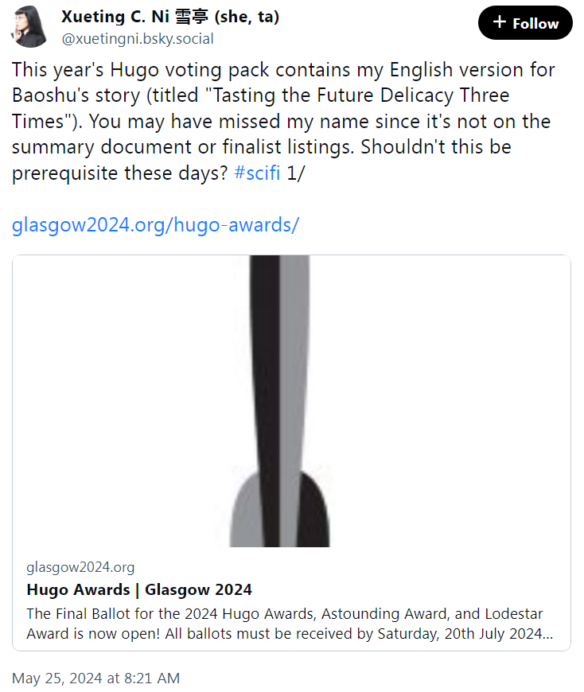

(6) GARFIELD MAKES MAX MADDER. According to the New York Times, “‘Furiosa’ Is a Box Office Dud, Adding to Hollywood Woes”.
Hollywood expected “Furiosa: A Mad Max Saga” to scorch the box office over the holiday weekend. Instead, the big-budget Warner Bros. prequel iced it over.
“Furiosa,” which cost $168 million to make, not including tens of millions of dollars in marketing costs, collected an estimated $25.6 million in the United States and Canada from Thursday night to Sunday. Box office analysts expected the film to take in about $5.4 million on Monday, for a holiday-weekend total of $31 million….
…Hollywood had high expectations for “Furiosa,” which Warner Bros. premiered at the Cannes Film Festival; the movie received exceptional reviews. On Sunday, however, it was unclear whether “Furiosa” would manage even first place at the box office. Analysts said the poorly reviewed “Garfield” (Sony), which cost $60 million to make, could inch ahead. It could also be a tie….
(7) ELUSIVE MEMORY. Phil Foglio sent a note about yesterday’s birthday celebrant, Ian McKellen:
Hardly anybody remembers this one, and it’s a damn shame: The best film version of the Scarlet Pimpernel. (1982) McKellen is the romantic villain, Paul Chauvelin. He is hilarious, heart-breaking, and ice-cold terrifying, and his is not even the best performance in the movie.
(8) TODAY’S BIRTHDAY.
[Written by Cat Eldridge.]
May 26, 1923 — James Arness. (Died 2011.) We are here tonight to discuss Marshall Matt Dillion, errr, I mean James Arness. Though he’s certainly best remembered for playing that role on Gunsmoke. It premiered on September 10, 1955 and would run until March 31, 1975, on CBS, with six hundred and thirty-five episodes.

The first two seasons were not called Gunsmoke, but rather were Marshall Dillon. I’m not much of a Western fan but what I saw of the few seasons I really liked.
After cancellation, there would be four Gunsmoke films about ten to twenty years later. Not going to comment on how old that made the actors who were still with us at that point…
So, his genre-related films.
Well, he did save Mike’s city from giant ants in Them where he played FBI agent Robert Graham. With others, he discovers that all the incidents plaguing Mike’s city are due to giant ants that have been mutated by atomic radiation.
In The Thing from Another World, mostly called The Thing, he played, errrr, The Thing. Cast in the role because of being six feet seven inches tall, he made a most splendid monster. Of course, you know that The Thing is based on the “Who Goes There?” which was written by John W. Campbell.

Lastly, he was Kirk Hamilton in Two Lost Worlds which was a really low budget Fifties film that had dinosaurs and pirates in it. How low budget? The dinosaurs appear 58 minutes into the film. They were taken from footage recycled from the One Million B.C. Film that had ended up in the bin. Yeah, they were considered that bad.
(9) COMICS SECTION.
- Broom Hilda avoids the second novel problem.
- Frazz ponders the difference between rereads and sequels.
- Free Range introduces a needed superhero.
- Shoe says an actor’s roles point to an inescapable conclusion.
- Thatababy explains brain freeze. Can you name the characters?
- The Argyle Sweater updates a fairy tale.
(10) ABSENCE MAKES THE HEART GROW FONDER. “Daniel Radcliffe not expecting to return for Harry Potter TV show”, so he tells Entertainment Weekly.
When it comes to the upcoming Harry Potter TV series, don’t expecto patronum Daniel Radcliffe to make an appearance.
The actor, who of course played the Boy Who Lived in all eight of the blockbuster Harry Potter movies, recently told E! News that he didn’t think a role or cameo in the upcoming entry into the Wizarding World was in the cards for him.
“I don’t think so,” he said. “I think they very wisely want to [have] a clean break. And I don’t know if it would work to have us do anything in it.”
And that’s perfectly all right with the 34-year-old actor, who added he is “very happy to just watch along with everyone else.”
Radcliffe remained coy when asked what his response would be should the Max production team actually conjure up an opportunity for him to return, though. “I’m gonna be a politician about this,” he said, “and not deal in hypotheticals.”…
(11) REPLICANT CHOW. [Item by Steven French.] This is a bit of a tangential genre allusion but I love Jay Rayner’s restaurant reviews in The Observer and I just couldn’t resist bringing this passage from his latest to the Collective Attention: “Sam’s Montpellier, Cheltenham: ‘Dishes that deserve our attention’ – restaurant review” in the Guardian:
…She smiles broadly. “Here at Sam’s, we have…” Pause. “A small plates concept. A bit like tapas.” You do? Oh, you marvellous, dear, young person. And if that sounds like I’m being patronising all I can say is, how clever of you to notice. In this job you see things. Granted, restaurant reviewing isn’t all attack ships on fire off the shoulder of Orion, and C-beams glittering in the dark near the Tannhäuser Gate, but it can be challenging. So when someone threatens profound difference, sweaty-palmed trepidation is reasonable. And when that difference turns out to be something achingly familiar, so is relief….
(12) WILL YOU FAIL TO PROVE YOU’RE NOT A ROBOT? NPR agrees, “It’s not your imagination. CAPTCHA tests are getting harder”. Weekend Edition host Scott Simon interviews cybersecurity expert Amanda Fennell.
… SIMON: What are some of the hardest CAPTCHA tests out there that you’ve seen?
FENNELL: Well, I actually am one of those people who’s challenged by them. There’s a percentage of the human population, about 3%, actually, that have a literal issue whenever they see these kind of stimulant tests. And so, for me, personally, they’re horrible. And it doesn’t matter if I do the audio or the visual. I have a high probability of failing it.
SIMON: And you’re a cybersecurity expert.
FENNELL: I know. That’s what they say. Yeah. But there are some better alternatives to what they’ve been using for CAPTCHA, the version 1, 2, 3, ReCAPTCHA with Google. There are better ideas that are coming out in more recent years.
SIMON: And they are coming out, right? There are things on the horizon?
FENNELL: You may have seen some of them. My personal favorite is actually gamification. It’s, you know, some kind of an image that’ll say, can you plant a garden? And you have to move the images that make sense. Simple questions, you know, what’s one plus one? Things like that. Sliders, which all of us Apple users love to see when we see a slider across the screen. But a lot of things are actually happening behind the scenes. This is actually concerning. And I don’t want to get on a soapbox, but this…
(13) VIDEO OF THE DAY. Ryan George checks out “What Facebook Is Like Now” – and it’s worse than any horror movie you can see in a theater, that’s for damn sure.
[Thanks to John King Tarpinian, Chris Barkley, Cat Eldridge, Rob Jackson, SF Concatenation’s Jonathan Cowie, Steven French, Teddy Harvia, Kathy Sullivan, Mike Kennedy, and Andrew Porter for some of these stories. Title credit belongs to File 770 contributing editor of the day Rev. Bob.]




